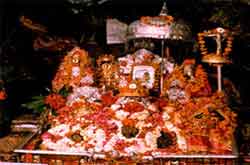Ladakh Travel Guide
Preparing for the Ladakh Trip - Ladakh experiences considerable fluctuations in the day and night temperatures, even during the summer. While the days are pretty warm, sometimes even hot due to the landscape's desert effect, the evenings can become chilly, requiring additional clothing. It is, therefore, advisable to keep a pullover and / or an anorak or jacket handy. A sturdy pair of walking shoes with strong rubber or synthetic soles for grip, thick cotton socks (woollen for late autumn treks or glacier walks) are other essential items for the trip.
Following is a brief list of items advised for your Ladakh visit:
Dress/ Equipment
- Comfortable trousers , preferably of warm material (cotton or wool mix) and / or Jeans.
- Thermal undergarments, sweat shirts / warm shirts (April-May / October- November).
- A full-sleeved sweater.
- Wind proof outer wear / jacket / parka, sun hat, a pair of good quality sunglasses with sufficient filter-factor to check the sun's brightness & ultraviolet rays.
- A cap or balaclava (in case the weather turns bad especially in higher places such as Pangong Lake , Tsomo-riri, Khadongla etc.)
Comfortable walking shoes / sneakers / with thick cotton socks (avoid fancy shoes/sandals).
- For ladies: Trousers or Shalwar suite (worn over thermal inner or tights during April-May & Sept-October only), woolen sweaters / cardigans, a windproof jacket or a shawl, walking shoes with comfortable soles / sneakers (avoid sandals).
- And lastly, it will be most useful if one carried a flashlight.
Miscellaneous
- All essential medicines, including those prescribed by personal physician (if any)
- Sun cream, lip- salve, moisturizers, antiseptic creams etc.
- Important - You may take (or as prescribed by your family physician) one Diamox tablets for 3 days prior to your departure for Leh by flight and continue the same for further 2 days within Ladakh to fight the effect of high altitude.
- Cash for purchase of commodities or services or souvenirs. Credit card charging is uncertain due to frequent connectivity problems in Ladakh.
- Weather Forecasting - Please go to the " Weather Forecast for Leh " link on any of the popular weather website to learn about the weather conditions in Ladakh during your visit; you can get advance information of the weather conditions for a 15-day period, including temperature at different parts of the day-night cycle.
Acclimatization and Altitude Sickness - Ladakh is a high altitude cold desert with a low level of atmospheric oxygen. It is, therefore, absolutely necessary that visitors reaching Leh from the plains of India by air, give themselves sufficient time for acclimatization before engaging in any physical activity. The rarefied atmosphere may cause high altitude ailments like Acute Mountain Sickness, necessitating instant evacuation of visitors who are unable to get acclimatized.
Anyone travelling to altitudes above 10,000 ft (2,700 m) is liable to suffer from acute mountain sickness (AMS) unless properly acclimatized. The most common symptoms of acute mountain sickness are headache, disturbed sleep and loss of appetite, nausea, coughing, irregular breathing, breathlessness, lassitude and lack of concentration. If you are reaching Leh by air, it is important to take complete rest for the first 24 hours after arrival. Any kind of physical exertion is to be avoided. Smoking and drinking should also be avoided till you are fully acclimatized. The symptoms of acute mountain sickness generally develop during the first 36 hours, and not immediately upon arrival. Your body should get used to the lower oxygen level of Ladakh after 2 or 3 days if you have taken complete rest for the first 24 hours and as much rest as possible during the next 12 hours.
High Altitude Pulmonary Oedema (HAPO) and High Altitude Cerebral Oedema (HACO) are very serious forms of acute mountain sickness. These are life-threatening ailments and warrant immediate medical attention. As a preventive measure, if required proper medication should be taken from the recognaised Medical Doctor before coming to Ladakh or any high altitude area. The following precautions are necessary to avoid such problems:
- Take complete rest for up to 36 hours after arrival. Especially if you are traveling by air to Leh (alt: 3505 M / 11505 ft.), you must allow a day of complete rest for getting used to the high altitude and low level of atmospheric oxygen. High altitude sickness or Acute Mountain Sickness (AMS) is a risky condition faced by tourists who do not allow sufficient time for acclimatization upon reaching Leh by air.
- Move about slowly and breathe deeply till your body can get used to lower oxygen levels.
- When trekking, do not permit your trekking guide to go any faster than you (and your group) can comfortably move.
- High Altitude Pulmonary Oedema (HAPO) and High Altitude Cerebral Oedema (HACO) are very serious forms of acute mountain sickness. These are life-threatening ailments and require immediate medical attention.
Supplementary Information
 Inner line Permits : For visiting Khardungla, Nubra Valley , Pangong and Tsomo-riri Lakes and the Dah-Hanu area of Leh District, it is mandatory to obtain Protected Area permits from the office of the Deputy Commissioner, Leh. For Diplomatic personnel, this permission is issued by the Ministry of Home Affairs, Govt. of India.
Inner line Permits : For visiting Khardungla, Nubra Valley , Pangong and Tsomo-riri Lakes and the Dah-Hanu area of Leh District, it is mandatory to obtain Protected Area permits from the office of the Deputy Commissioner, Leh. For Diplomatic personnel, this permission is issued by the Ministry of Home Affairs, Govt. of India.
Useful Tips - In Ladakh, you will find a culture in rapid transition, yet one in which the traditional values are still largely intact. In order to make your visit to Ladakh more pleasant, both for yourself and for the host community, some general guidelines that may be helpful.
Dress Code - Please avoid wearing shorts and sleeveless shirts, blouses, tops, undershirts etc. in public and especially in monasteries, mosques, temples, gurudhwaras, and churches. The same holds true on the trekking routes. While short clothing is acceptable in camp-sites away from human habitation, they should be changed for trousers, slacks and sleeved shirts or blouses in villages where you might stop. Under no event should swimwear (and for women bikini tops) be worn in public as these may be taken as sexually provocative and be a cause of possible harassment.
Behaviour Code - Please keep your affection for your partner as a private matter
and confined to your own rooms or tents, but not for public display, on the street, in religious buildings, in restaurants or at public events.
Photography - Please do not take photographs of local people without seeking permission, nor of, or within, any religious building and of any religious ceremony, without permission of the official in-charge of the concerned religious place. Remember that the intense light of flash photography is damaging to ancient wall paintings and tapestries.
Travel Agencies & Tour Operators - A number of tour operators and travel agents offer their services to the tourists. These include local operators as well as representatives of national - level travel agencies. Visitors are advised to look for the operator with the best service record because their inclusion in the list does not confer any official recognition upon them or any recommendation.
Healthcare & Medical Assistance - The main centre for health care in Leh is the SNM Hospital, which is well equipped and staffed by specialists to handle all problems. Elsewhere in the region, there are sub-district hospitals at block headquarters and medical dispensaries in major villages, which are staffed by qualified doctors. In addition, services of the private clinics and associated facilities are also available in Leh
Meditation Facilities - The Mahabodhi International Meditation (MIM) Centre situated near Choglamsar, Leh, offers regular courses in various forms of meditation under the supervision of trained teachers. The MIM Centre’s facilities are quite good and the charges are nominal, sufficient to cover the cost of food. The Centre also runs a branch within Leh town at Changspa. Meditation facilities are also available in Hotel Agling Resort on commercial basis in a package covering accommodation and courses.
Foreign Exchange - The State Bank of India and the J&K Bank have branches at various places in Ladakh, with main branches in Leh and Kargil, where foreign exchange facilities are also available. The State Bank of India also operates an extension counter at the Tourist Information Centre located in the Dak Bungalow Complex, Leh. Some hotels in Leh are also licensed to deal in foreign exchange, though these mainly service in-house clients. There is no foreign exchange facility outside these two towns.
Communication - Leh and Kargil towns have worldwide direct dial telephone/ mobile facility and there are a number of public call offices operating in Leh town for the convenience of the tourists. There is also a General Post Office and a Telegraph Office in Leh.
The State Tourism Department has its own wireless radiophone network linking its offices at Leh, Kargil and Padum, with those at Srinagar, Jammu and Delhi. This facility is mainly used to monitor the movement and welfare of tourists in the State. It is especially useful in ensuring timely rescue arrangements for tourists falling ill or injured in accidents.

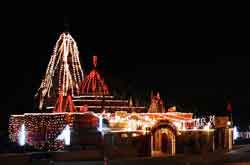
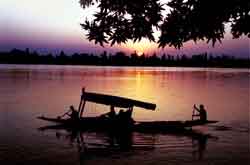
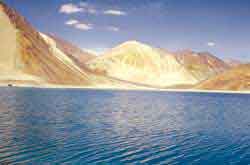
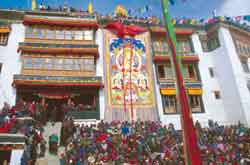
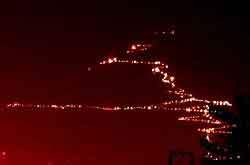
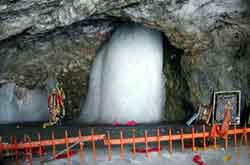
 Inner line Permits : For visiting Khardungla, Nubra Valley , Pangong and Tsomo-riri Lakes and the Dah-Hanu area of Leh District, it is mandatory to obtain Protected Area permits from the office of the Deputy Commissioner, Leh. For Diplomatic personnel, this permission is issued by the Ministry of Home Affairs, Govt. of India.
Inner line Permits : For visiting Khardungla, Nubra Valley , Pangong and Tsomo-riri Lakes and the Dah-Hanu area of Leh District, it is mandatory to obtain Protected Area permits from the office of the Deputy Commissioner, Leh. For Diplomatic personnel, this permission is issued by the Ministry of Home Affairs, Govt. of India.